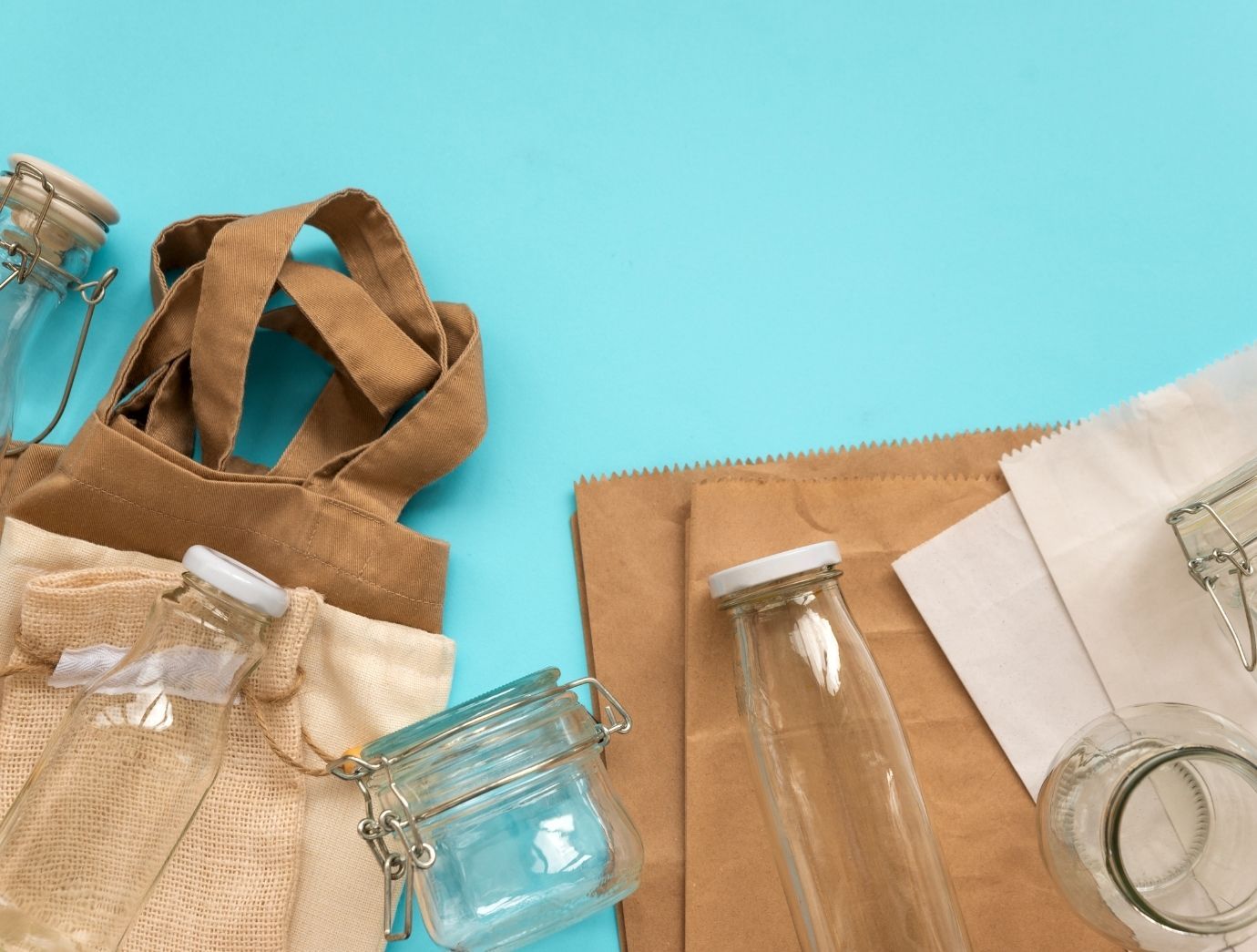It’s no secret that single use plastics are terrible for the environment. While Zip Lock bags and plastic cling wrap have been the go-to staples in our kitchens for years, there have never been so many choices for easy, low-waste food storage.
With new products emerging on the market, the problem now is knowing where to start when looking for low-waste food storage swaps. Many Fresh Chalk members are recommending eco-friendly options, so I’m breaking down the pros and cons for the most popular of these swaps.
Stasher Bags
Likely the most popular of the silicone food bags, stasher bags ($12-$30) are great for sandwiches, snacks, and more. They are reusable, microwave safe, dishwasher safe, freezer safe and come in a variety of sizes. After putting these stasher bags to the test (for years) I can attest to their durability. The downsides are that the openings of the bags are not very wide and it gets harder to achieve an airtight seal after a lot of use.
Meredith Fife agrees: “This is great for small snacks. I like to take it on hikes and fill it with trail mix or grapes. It washes and dries easily and it's great for the environment. What's not to love?”
Plastic Slider Silicone Bags
A cheaper alternative to the stasher bags ($18), these bags do everything that stasher bags do with a slightly different structure. Instead of a “pinch to close” method, these have a plastic slider. The pros to the slider are that the airtight seal is pretty much guaranteed—they don’t get harder to close as time goes on, and the bag itself will open wider. As for the cons, there are limited size choices, they can be difficult to close when you first buy them (it gets easier with time), and the slider design means that the bags are not completely plastic free—but still way better than endless Zip Locks.
Jacob Hollenbeck had this to say: “We have been moving away from single-use plastic like ziplock bags. Got these for Christmas and so far they are awesome! Started storing meats in the freezer with them. They are pretty heavy duty and have a nice seal.”
Why is silicone so great, you may ask? Silicone (silica) is made out of sand, and although it resembles plastic in its look, it’s way more durable (hence reusable), doesn’t contain the same harmful chemicals, and can be recycled.
Beeswax Food Wraps
Did you know that every year Americans use enough plastic cling wrap to wrap the entire state of Texas? Yikes! Beeswax wraps ($23) are here to save the day. These wraps are made of organic cotton, beeswax, and pine resin. Using the warmth of your hands, you can wrap bowls, avocados, sandwiches and more. They’re reusable until the stickiness of the beeswax wears off (roughly 9-12 months), so you want to make sure you’re washing the wraps in cool water, as warm water will melt the wax. When these wraps are no longer usable, they can be composted, or even be used as a great fire starter when you go camping.
Here’s why Liz Pearce loves beeswax wraps: “I feel like I'm a little late to the party with these beeswax food wraps. Since I'm cooking more than ever (and trying not to waste food), I was constantly running out of food storage containers and resorting to plastic bags or wrap. These are great because they are eco-friendly and don't take up a lot of storage space. They require a few seconds of warming in your hands before they'll attach properly, which I use as a reminder to take a few deep breaths!”
Lunchskins
Lunchskins ($11) are great for on the go snacks. These reusable sandwich and snack bags come in a variety of prints and colors, are dishwasher safe, zippered close, and can replace an estimated 750 plastic bags in their lifetime. The only downside is that the opaque cover makes it harder to remember what’s in the bag if you leave it in your fridge. I recommend these for snacking and on the go.
Check out this recommendation from Carly Canter: “An affordable plastic bag alternative! These are COMPOSTABLE, too! Never need to use plastic bags ever again.”
Glass Food Storage
Sure, glass food storage isn’t anything new, but when it’s time to ditch your plastic set, these glass containers ($40) are great for an eco-friendly swap. Not only is glass a more sustainable material than plastic, but these containers should last longer than plastic sets, they’re easier to clean, much less susceptible to food stains, and are microwave safe.
Carly Canter says: “Any type of glass container is already a winner in my book. But these are some of the best on the market!”
Hopefully this list will inspire you to try a new eco-friendly product or share with us your favorite plastic-free swap. Though it may seem like a small effort, little changes will go a long way over time and ultimately the planet will be better for it.
We want to know what eco-friendly food storage products you love. Leave a recommendation of your own to earn good karma and share your sustainability tips with the Fresh Chalk community.
